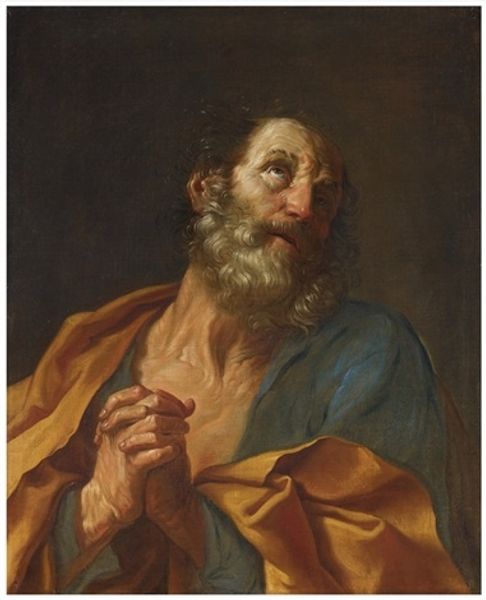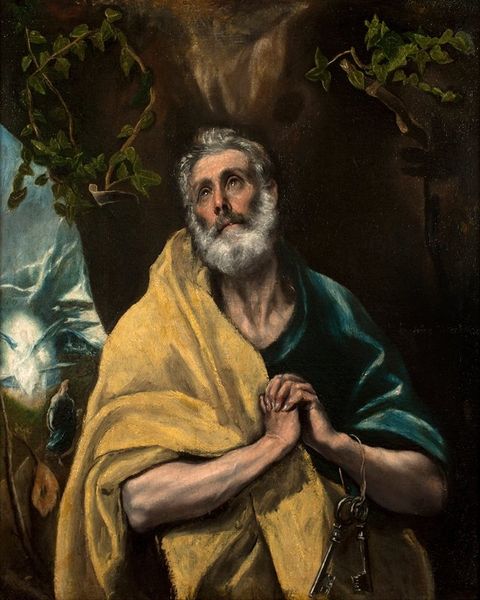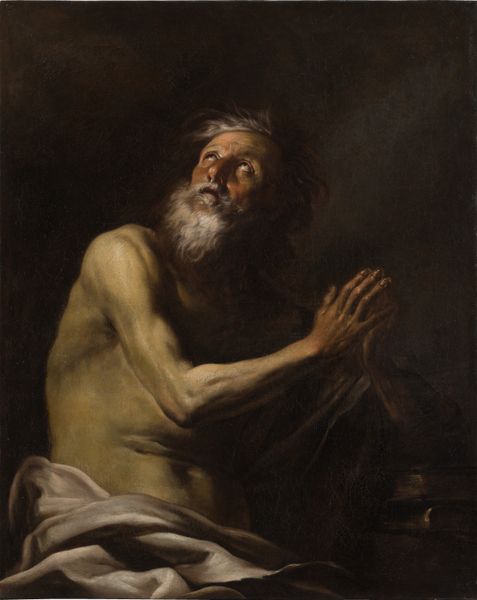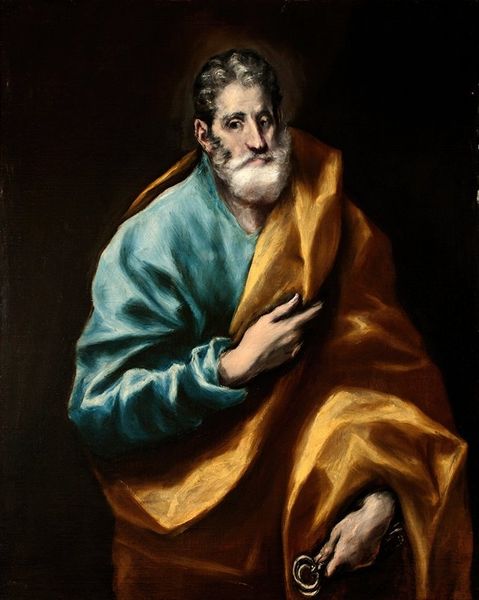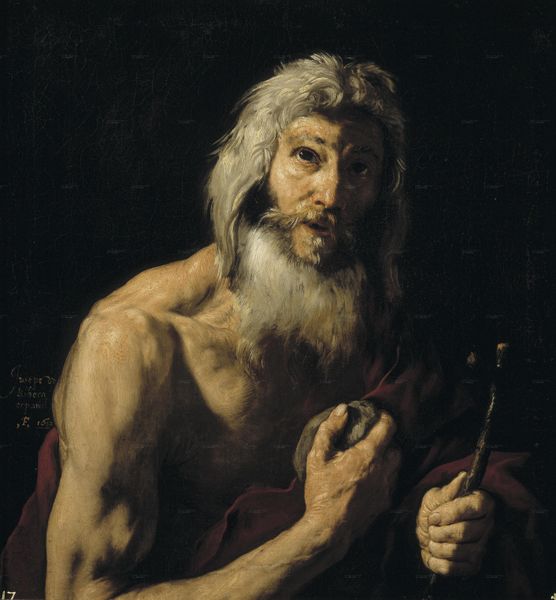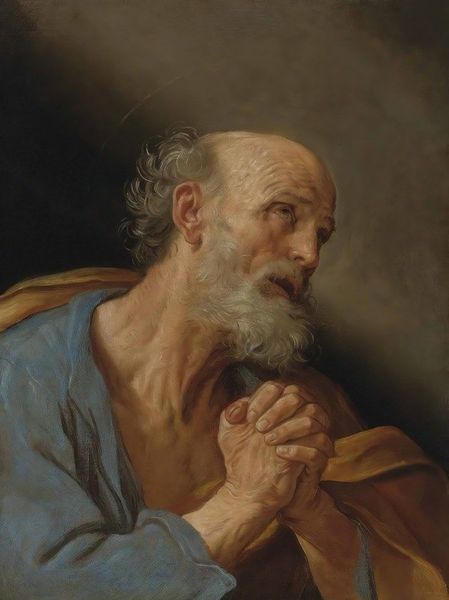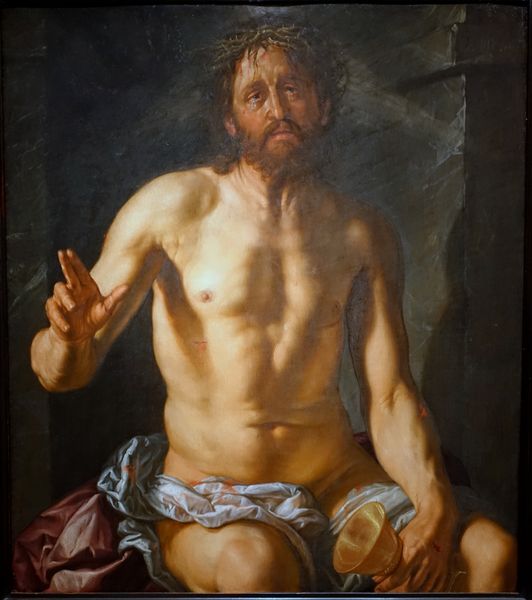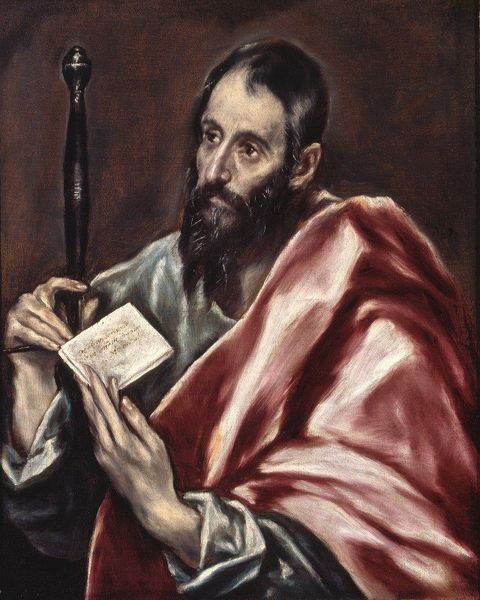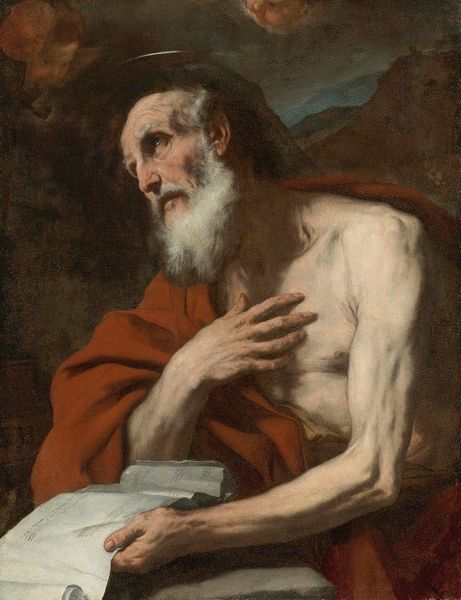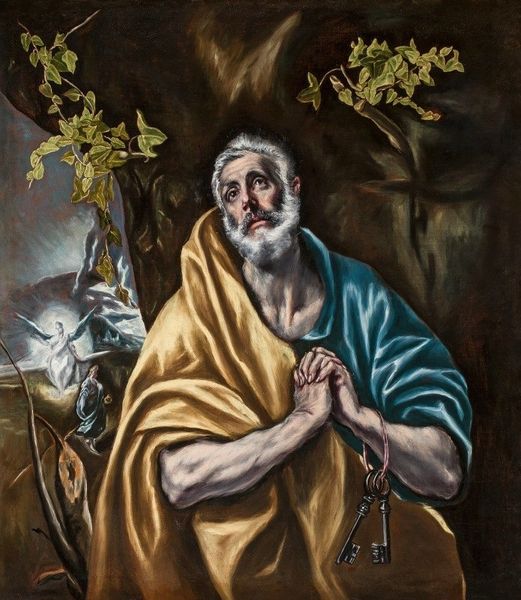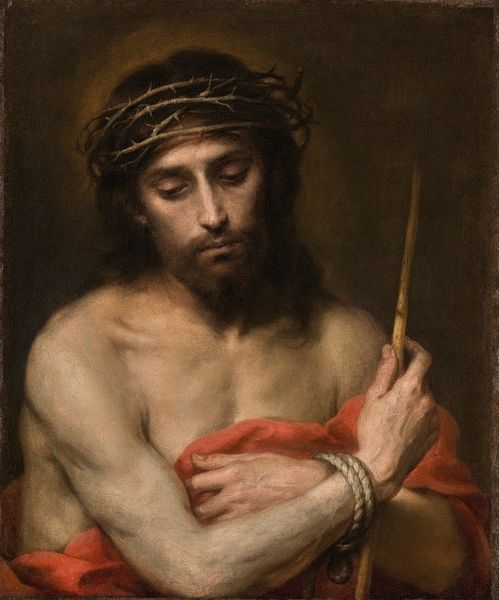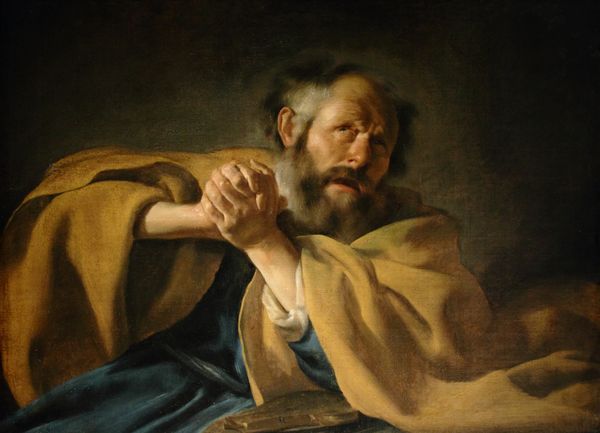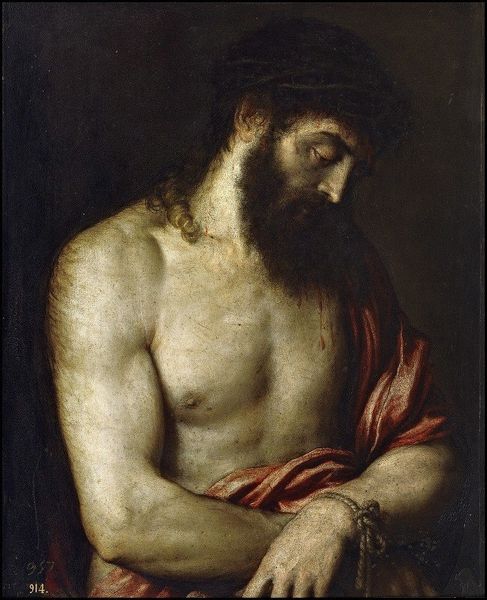
painting, oil-paint
#
portrait
#
baroque
#
portrait
#
painting
#
oil-paint
#
charcoal drawing
#
figuration
#
history-painting
Dimensions: 103 x 130 cm
Copyright: Public domain
Editor: This oil painting, simply titled "St. Bartholomew" is attributed to Jusepe de Ribera. The figure’s intense gaze and the stark contrast of light and shadow give the piece a powerful, almost unsettling quality. What do you see in this piece? Curator: Ribera’s “St. Bartholomew” strikes me as a profound commentary on faith and suffering. The artist’s naturalistic rendering of the saint’s aging body, combined with the heavy chiaroscuro typical of the Baroque period, emphasizes the human vulnerability at the core of religious devotion. But look closely, consider the politics of martyrdom; how does this portrayal of Saint Bartholomew engage with themes of sacrifice and power within its historical context? Editor: I see what you mean. There is this sense of human vulnerability in the way he is looking up. Knowing how he died adds more layers of meaning to the painting. Curator: Precisely. Consider the symbolism inherent in portraying Bartholomew partially nude and holding the knife – the instrument of his martyrdom. It speaks to the way the body becomes a site of political struggle and resistance against oppression. What does it say that even in intense pain he still holds strong beliefs? Editor: That’s a perspective I hadn’t considered before, viewing his pain as a political statement. Curator: His agony transcends individual suffering and enters the domain of collective resistance. How does the knowledge of Ribera being active during the Counter-Reformation period shape your understanding? How much are his painting's message rooted in both religious belief and defiance against forces of social and political control? Editor: It makes the painting feel so much more urgent. The historical context is crucial to understanding art like this. Curator: Exactly! And what's particularly fascinating is to think about how Ribera situates “St. Bartholomew" in a lineage of artworks exploring power and persecution across gender and race. Now, does this context inform a new interpretation of faith itself as a rebellion against imposed dogma? Editor: I am leaving this conversation feeling changed, ready to question not only this, but every artwork and its broader narrative. Curator: Remember that artworks are sites where historical, social, and personal narratives converge!
Comments
No comments
Be the first to comment and join the conversation on the ultimate creative platform.
